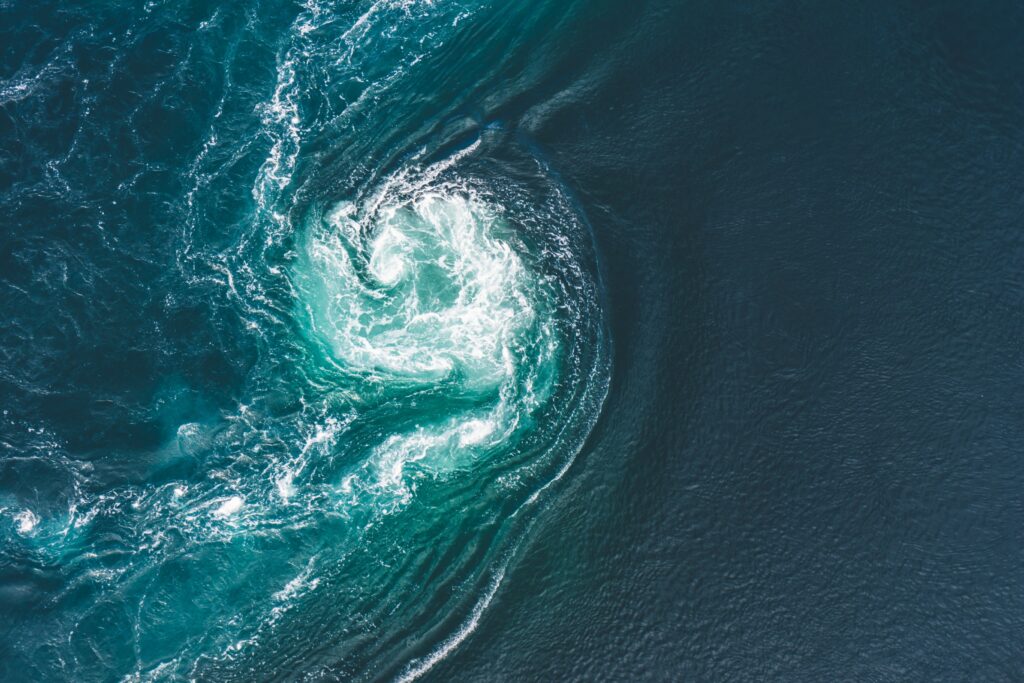By Alyosha at Pacific Surf Group
The Science of Surfing
Surfing is not just about hitting the waves with a board; it’s also about unraveling the secrets that lie beneath the ocean’s beauty. It’s no surprise that a good surfer will not only have impeccable balance and resilience but also vast knowledge about the ocean and its mechanisms. This post aims to delve into the science behind surfing, shedding light on ocean currents, tides, and waves, and how they all intertwine with surfing. As we advance, we will see why a scientific understanding could provide an edge for any surfer.

Understanding Ocean Currents: What Surfers Need to Know
Ocean currents can be game changers in the surfing world. They are powerful, directed movements of seawater caused principally by wind and differences in water temperature. They significantly influence the wave conditions and sea surface temperatures, both crucial for surfing activities. For example, if a surfer can read the conditions and predict where an ocean current might take them, they can use that to their advantage to catch waves more efficiently or avoid dangerous situations. Additionally, understanding the dynamics of these currents can help surfers make informed decisions about where and when to surf.
Unveiling the Magic of Tides for Surfing
The tides, directly affected by the gravitational pull of the moon and sun, are a fascinating aspect of ocean science. They are the rise and fall of sea levels, which follow a reliable, predictable pattern. Tides create different surfing conditions at every tide stage and can dramatically change your surfing experience. Having a solid grasp of tide predictions will allow surfers to choose the perfect time to catch the best waves. For instance, some spots might have great wave breaks during high tide while others could be better during low tide. It all comes down to how the tide interacts with the seafloor.
Riding the Waves: The Science of Wave Formation
Waves are the heart of surfing, and about every surfer has a certain respect and admiration for these energy transmissions. But what causes these waves? In the simplest terms, waves are energy traveling through water. Most surfing waves are formed by wind blowing across the ocean’s surface, creating friction and then waves. The size and shape of these waves are determined by various factors such as the speed of the wind, its direction, and duration, as well as the expanse of water (fetch) over which it blows. A better understanding of wave science provides surfers with insights into where and when to find ideal surfing waves.
How Meteorological Changes Affect Surfing
Weather plays a massive role in the surfing experience. Storm systems create powerful swells, and wind drives the waves. Meanwhile, shifting wind patterns can turn a perfect break into an unrideable mess. Understanding weather patterns, especially those over the ocean can provide surfers with vital data on when the best swells will arrive and how long they might last. Surfers who comprehend the importance of meteorology, can foresee, and adapt to sudden weather changes creating optimal surfing conditions.
The Impact of Moon Phases on Surfing
As astonishing as it sounds, the moon impacts surfing significantly. The moon’s gravitational pull substantially influences the tides, causing tide changes. During new and full moon phases, the sun, earth, and moon align, leading to greater gravitational pull and larger tide ranges called ‘spring tides.’ On the contrary, during the first and third quarter moon phases, the gravitational forces from the moon and sun counteract each other, resulting in smaller tide ranges called ‘neap tides.’ Recognizing these patterns can be advantageous for surfers when planning their surfing sessions.
Why Swell Direction Matters in Surfing
Surfing goes beyond just riding any wave; it’s about engaging with the right waves. The direction from which a swell comes is essential to its quality once it breaks. A slight shift in swell direction can transform a mediocre surf spot into a surfer’s paradise, or vice versa, affecting wave size, power, and the shape of the break. A profound understanding of swell direction can help surfers increase potential wave opportunities and enhance their overall performance.
Understanding Rip Currents: A Surfer’s Nightmare
Rip currents, while being the bane of swimming, have a love-hate relationship with surfers. These powerful, narrow channels of water moving directly away from the shore are notorious for their ability to pull even the strongest swimmers out to sea. For surfers, they can be convenient for an easy ride back out to the break, yet dangerous if they draw you too far out. Understanding how to identify and navigate rip currents are critical skill for surfers to ensure their safety in the water.
Gravitational Forces and Their Effects on Surfing
Gravity affects everything, and surfing isn’t unique. Gravity interacts with the surfer, the surfboard, and the wave itself in a fascinating dance. It pulls the wave crest downwards, creating the wave’s face where surfers ride. It also pulls the surfer downwards, giving them the speed to catch the wave and keep up with it. Understanding how gravity works permits surfers to predict wave actions better and adjust their strategies to stay on top of the water.
How Knowledge of Oceanography Enhances a Surfer’s Skills
Knowledge of the ocean’s workings isn’t required for surfing, but it undeniably enhances a surfer’s abilities. An understanding of things like wind patterns, tide shifts, and the effect of underwater topography on wave formation allows a surfer to better read the ocean and make informed decisions about safety measures, proper gear, and wave selection. The more knowledge surfers have about why waves act the way they do, the more adequately they can react, adapt, and ultimately succeed in their surfing journeys.
The Surfing Science and What It Means for Surfers
In conclusion, the science behind surfing is just as riveting and complex as the sport itself. It’s a delicate orchestration of wind, water, lunar phases, gravity, and even weather patterns. While you feasibly can surf without comprehending the science behind it, having an appreciation and understanding of these factors can significantly enhance your precision, safety, and overall enjoyment of the sport. The more we understand, the better we ride. Embrace the science behind the stoke!
